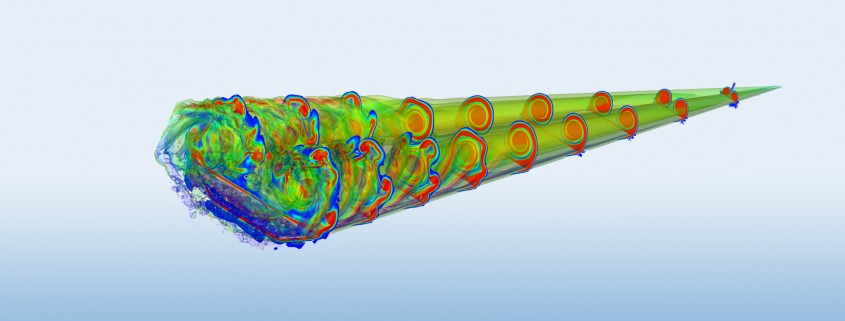RUG and NLR support Aircraft Manufacturers in their quest
RUG and NLR developed new pioneering computer methods and models for the accurate simulation of airflow around aircraft. This supports aircraft manufacturers in their quest for greener and more efficient airplanes.
To make aircraft greener and more efficient, aircraft manufacturers would like to understand what causes transition to turbulence; delaying this transition can reduce drag and thus save fuel. Therefore Wybe Rozema from the University of Groningen (RUG) and the Netherlands Aerospace Centre (NLR) worked during his PhD research on the next step towards understanding turbulence.
Low energy
“In practice the flow around aircraft is often turbulent”, says Rozema. “For accurate simulations of turbulent airflow, it is important that the simulation method does not dissipate the energy of the turbulent whirling. Therefore my research focused on simulation methods and models with low energy dissipation”. Rozema developed a new mathematical analysis of energy conservation in simulation methods. To test his ideas, massive computer simulations of the flow over a delta wing have been performed in cooperation with the NLR, after which NLR’s aerodynamic models were improved.
Super computer
Flows around airplanes are so complex that only the biggest super computers are powerful enough to compute all the turbulence directly. For this project, the national super computer Cartesius was used. This simulation took more than two months and provides a detailed picture of the transition from orderly to turbulent flow.
Complex whirling
A simulation with too much turbulence becomes overly chaotic, and eventually crashes the simulation program. On the other hand, a simulation with too little turbulence may not capture the very transition process that airplane designers are interested in. Rozema: “The solution lies in carefully simulating the energy of the turbulent whirling. Violent whirling is not a problem. In fact, complex whirling is what turbulence is all about. The problem is that simulation programs can give erroneous results or crash if eventually small errors in the computations can sum to a big energy error. Therefore, we have developed methods without energy errors. Given the complexity of turbulent flows, it is quite remarkable that turbulence can be tamed by simply keeping the energy errors of the whirling in check.”
Laminar Flow Technology
“Although this research is a significant step forward in understanding the transition to turbulence, we are not there yet. Achieving drag reduction by suppressing turbulence, so called Laminar Flow Technology, is one step beyond”, says dr. Johan Kok of the NLR. The NLR will invest more effort in the upcoming years to explore Laminar Flow Technology and to make sure the outcome of NLR’s research can be applied by the industry. This way you will see that a combined effort of industry, university and knowledge organisations leads to economic and societal impact that matters.



